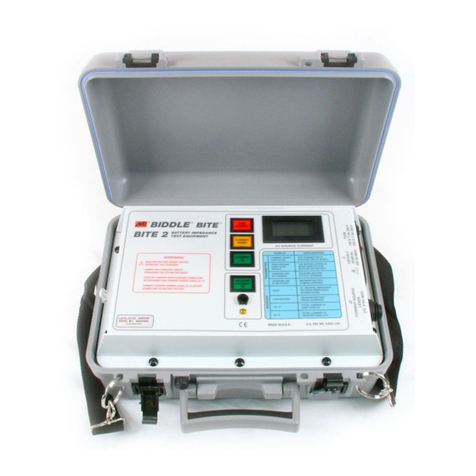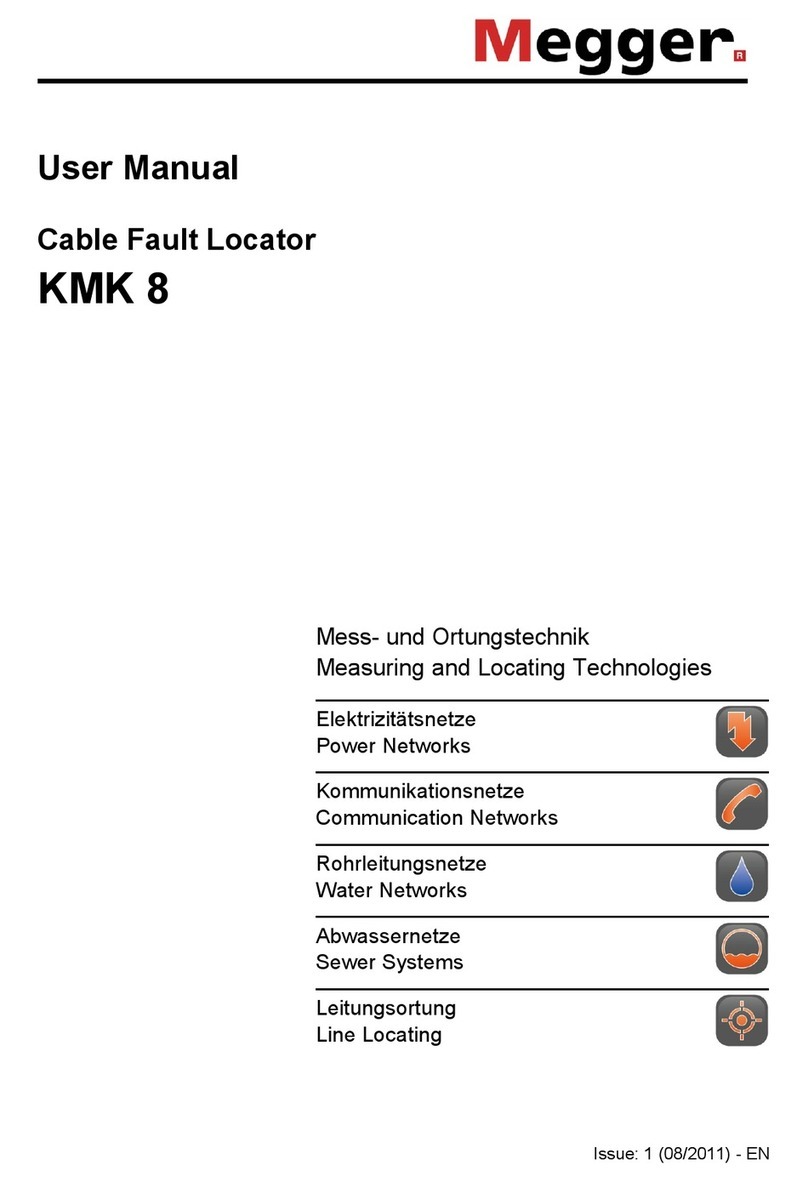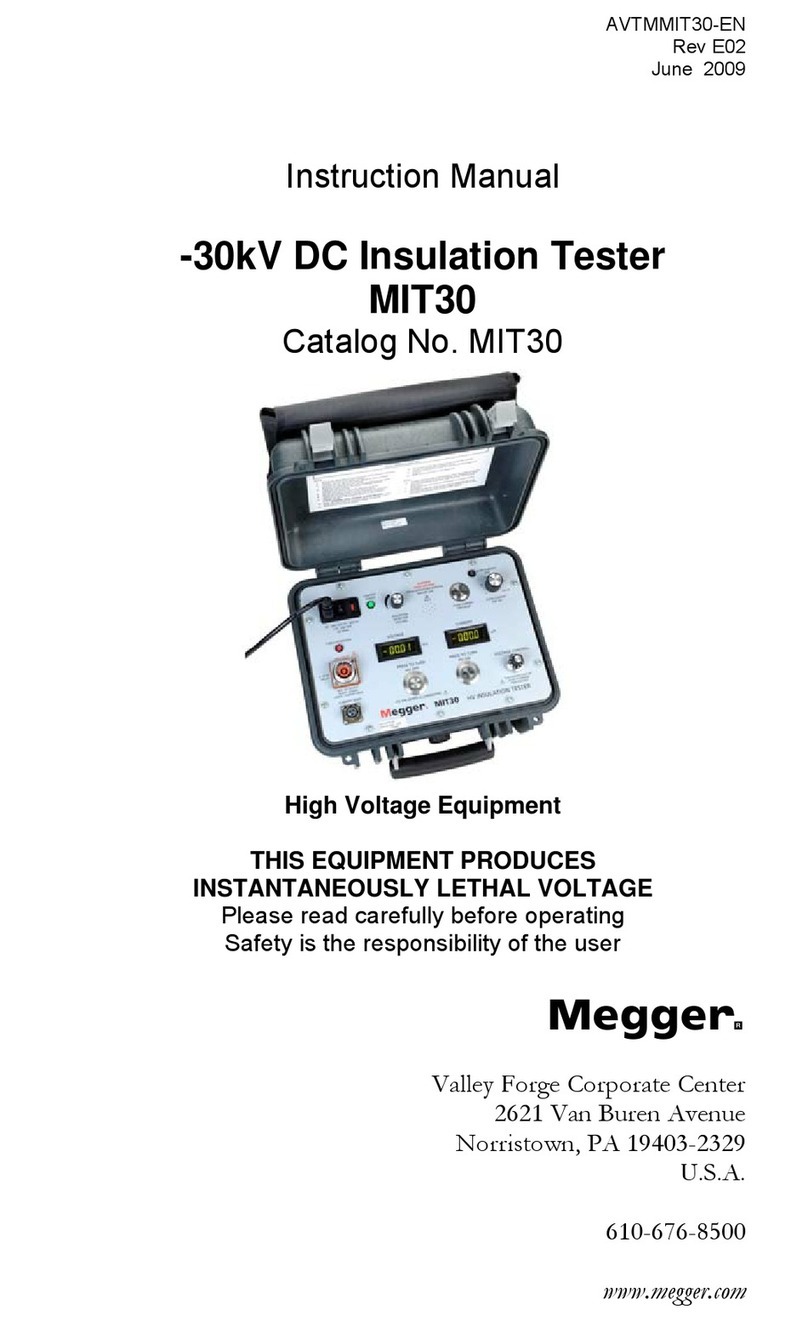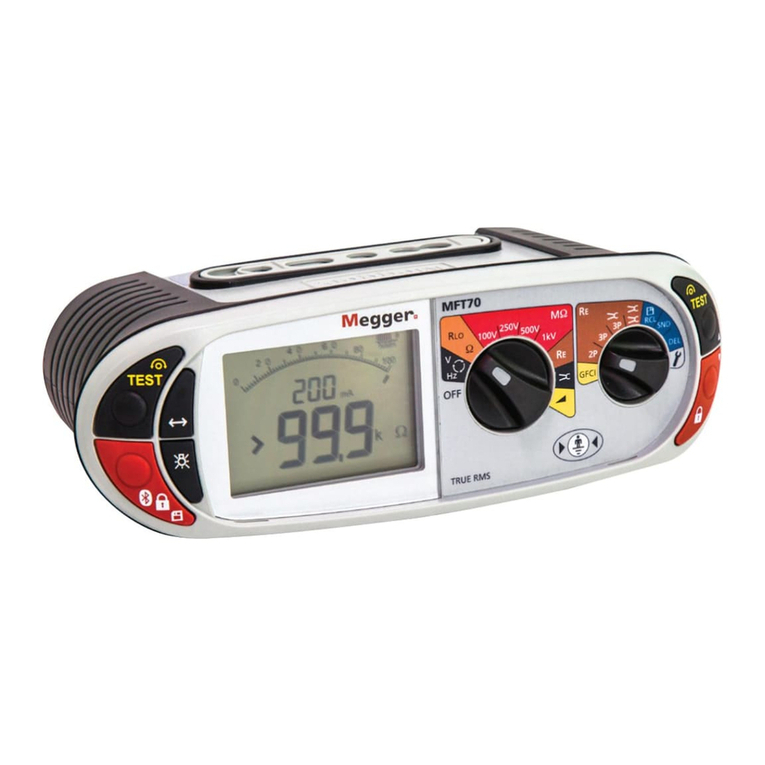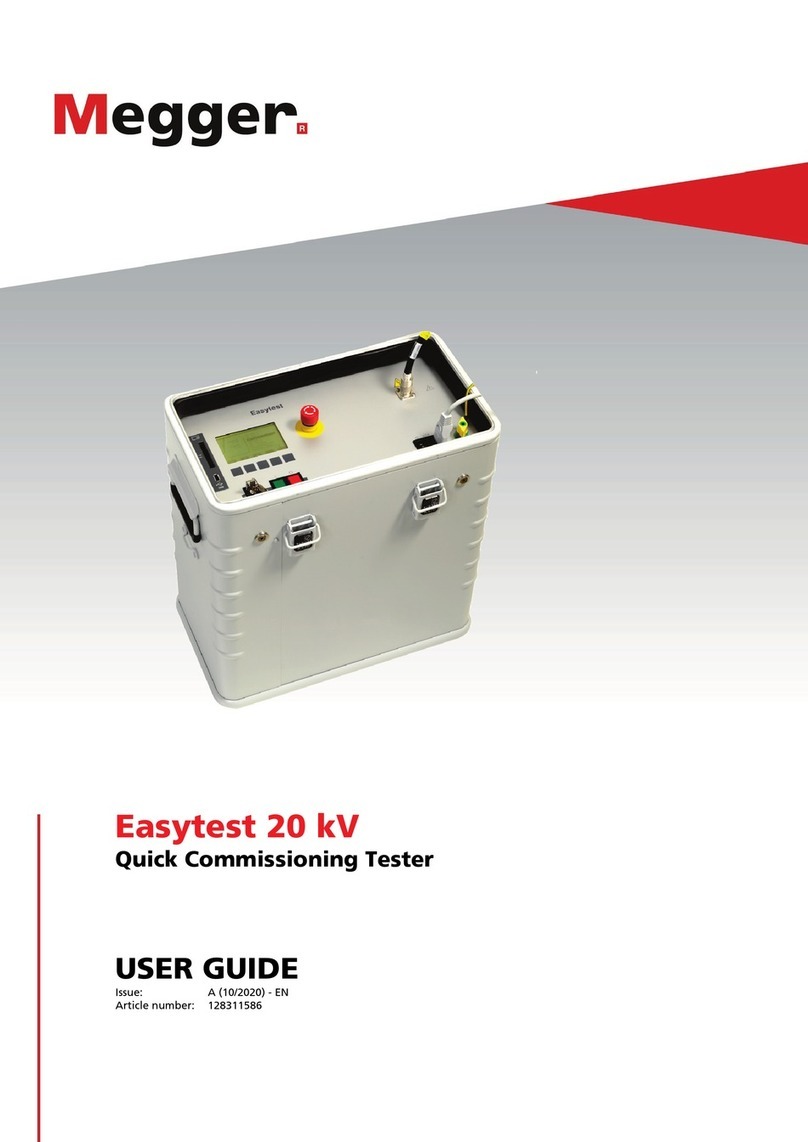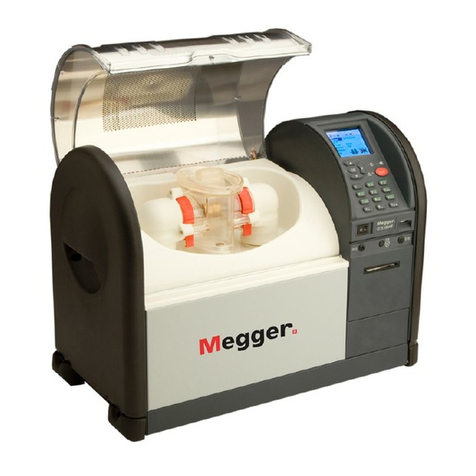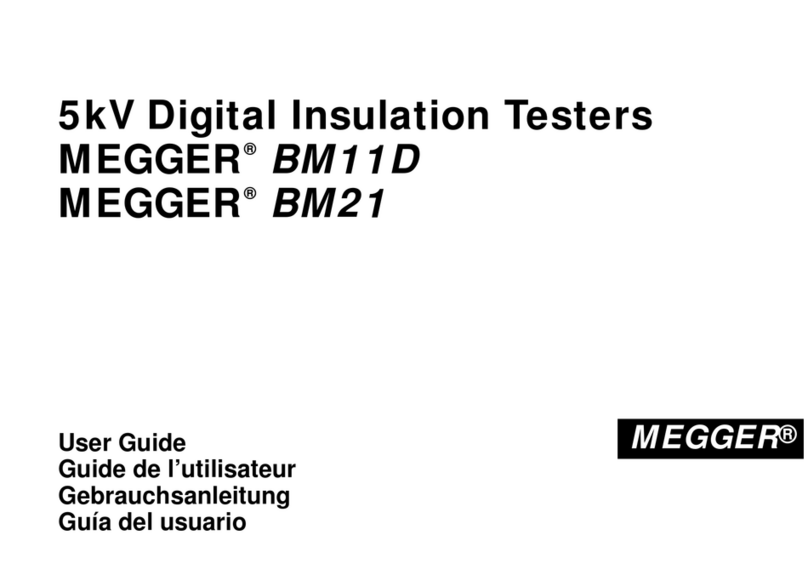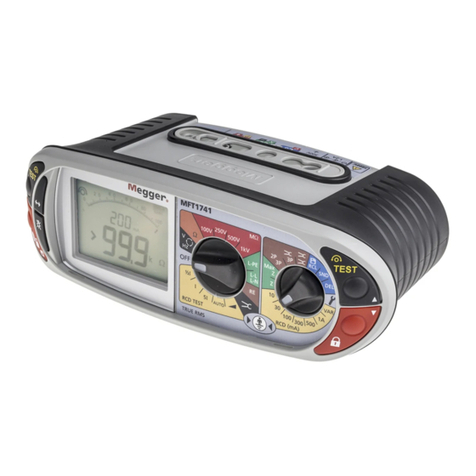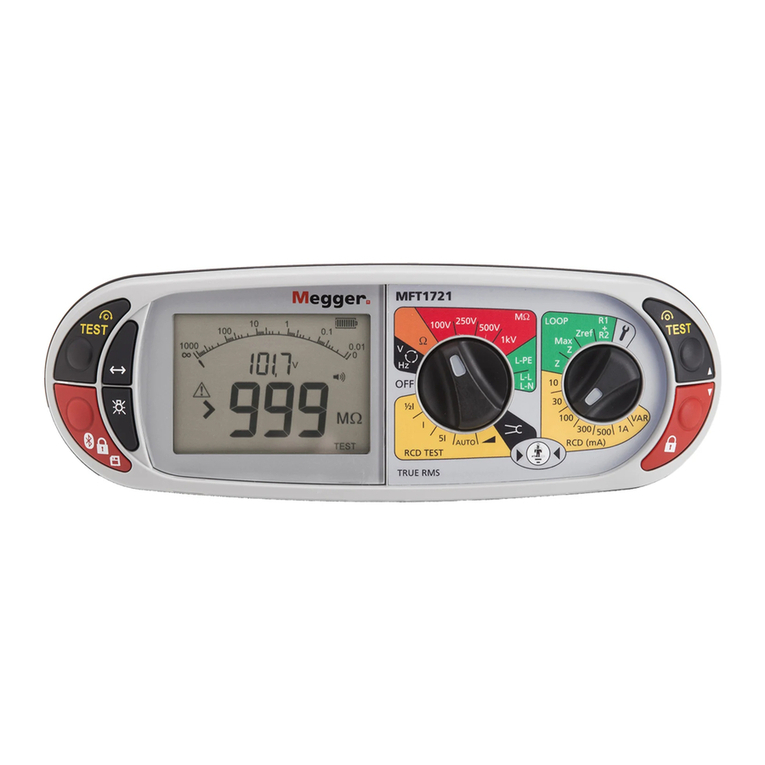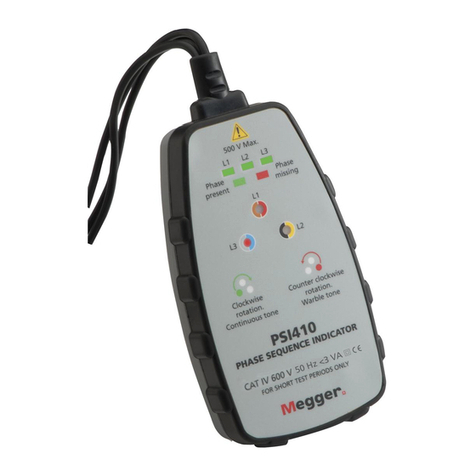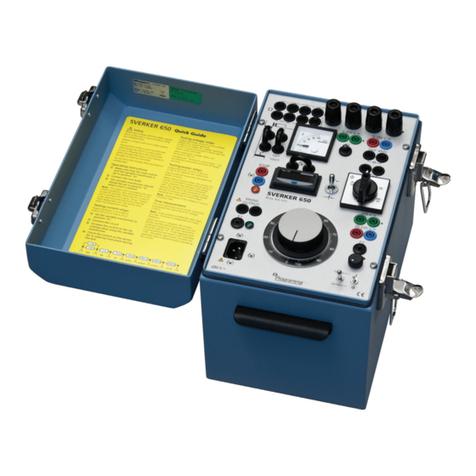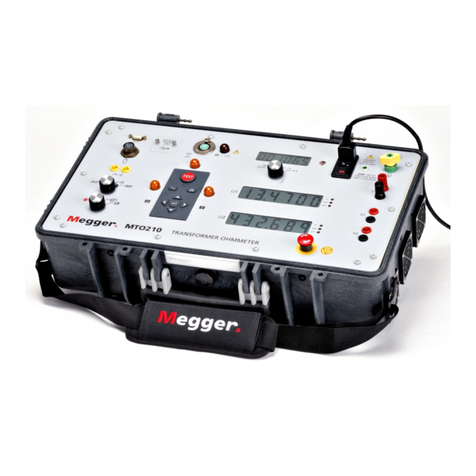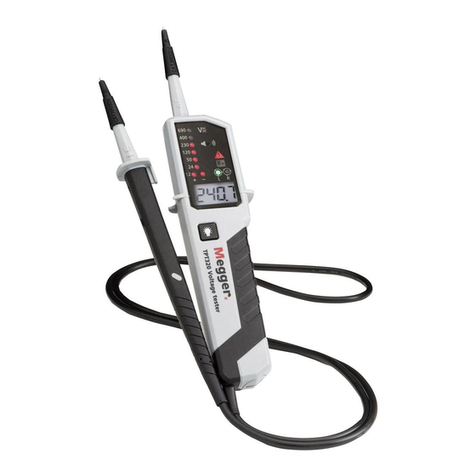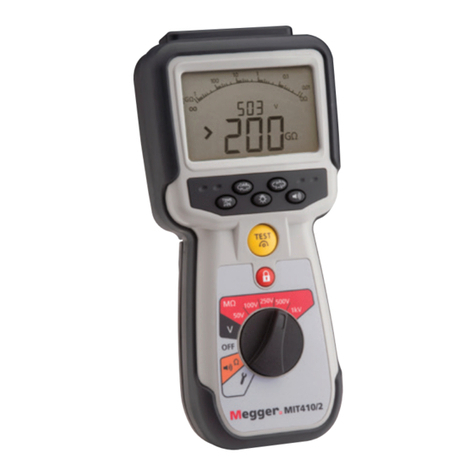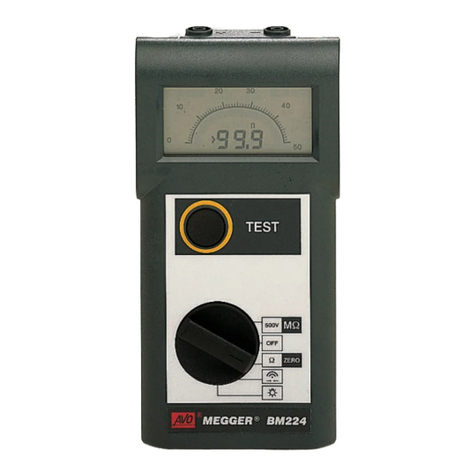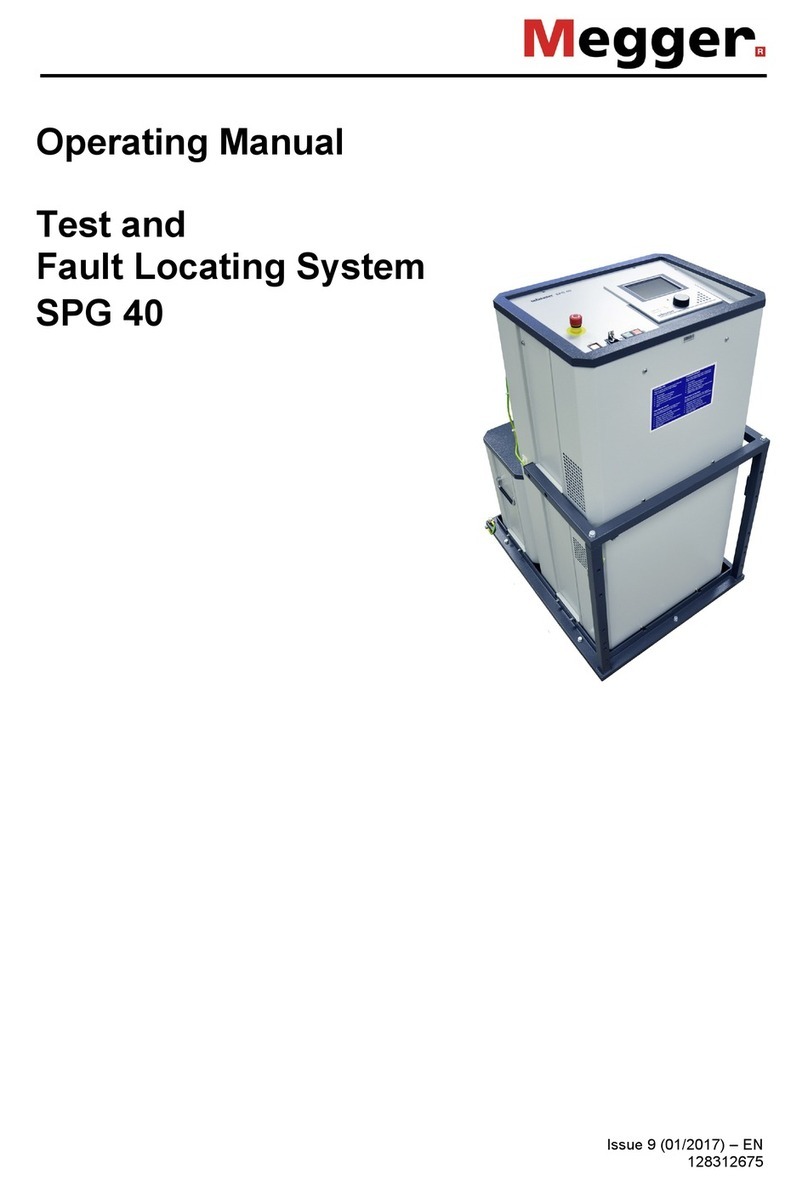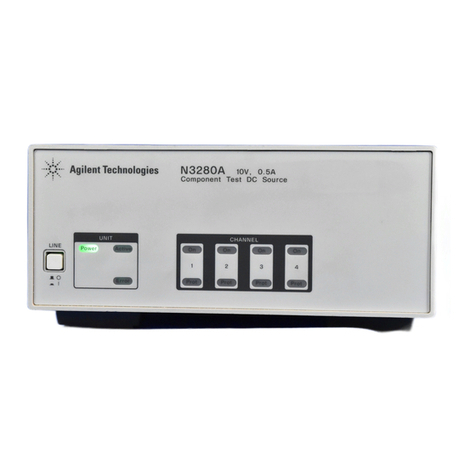
10
Area of application Dielectric losses can be measured on cables with XLPE (Cross Linked Polyethylene),
PE (Polyethylene), PILC (Paper Insulated Lead Covered) and EPR (Ethylene-
Propylene Rubber) insulation.
The measurement results for mixed sections can only be conditionally interpreted. It is
possible, for example, to diagnose a PILC cable section with a small proportion of
XLPE cable (e.g. about 10%) according to the criteria for a regular mass impregnated
cable.
However, a XLPE/PE cable section with a certain proportion of PILC cable cannot be
evaluated according to the known criteria for XLPE/PE insulation. This is due to the fact
that measurements on even fault-free mass PILC cables show a considerably higher
dielectric loss factor.
Prerequisites In order to use the tan Delta test attachment to measure the loss factor, a VLF sine
wave voltage source (VLF Sinus test system) is required for applying a sinusoidal
voltage to the test object.
It does not matter if the VLF sine wave is used as a stand-alone system or as a
component of a measurement or diagnostics device.
It is only important that the version of the software used by this system is able to
analyse tanδ measured values. This is always evident in that a corresponding
operating mode is provided in the software.
If this is not the case, please contact your Megger sales representative.
The tan Delta test attachment has been developed and designed exclusively for
use with VLF sine wave systems of the Megger Group. If other test voltage sources
are used, no guarantee can be made for trouble-free functioning and correct
measurement results.
System components The tan Delta test attachment consists of three main components, which are
responsible for different tasks:
•Measurement unit
The “Measurement Data Unit” (MDU) is directly integrated in the HV link
between the sine wave source and test object and measures the object's
current and voltage. The measured data are transmitted to the software per
wireless signal via the E-Box.
•Termination Current Unit
(only if your product configuration includes leakage current compensation)
The task of the “Termination Current Unit” (TCU) is to record the leakage
current over the terminations and to transfer this information to the
measurement unit via the optical link.
•Data Reception Unit
The “Data Reception Unit“ (DRU) enables the exchange of control and
measurement data between the software and the measurement unit via
wireless signal and USB interface.
